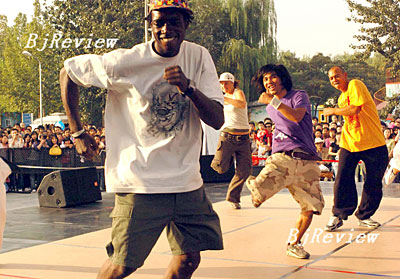|

As the capital city of the last dynasties in the history of China, Beijing developed a complicated fortification system, consisting of city walls, gates, watchtowers and moats. Although most of the defense architecture has been dismantled to make way for modern infrastructure, some old names still stay with the city. Chaoyang District in the northeastern part of the city proper earns its name from the east gate of the ancient inner city: Chaoyang Gate.
Chaoyang Gate, literally "the gate facing the sun," was the first place of the inner city to be bathed in sunshine. In ancient times, grain transported through the Grand Canal linking Beijing with southern city Hangzhou was shipped into Beijing through Chaoyang Gate.
Besides the relics of the Grand Canal, Chaoyang District also boasts the Temple of Dongyue, the largest Taoist temple in northern part of China, and the Temple of Sun, where emperors worshipped the solar god, as well as Yongtong Bridge built in the 15th century, one of the three oldest bridges in Beijing.
Beijing's versatility as an ancient capital city and a fast-growing metropolis is best illustrated in the humming economy of Chaoyang District. Beijing's central business district is shooting up in Chaoyang, where landmark buildings like the office building of China Central Television are gobbling up space.
Chaoyang is also bound to be bathed in the glory of the Olympics during the 2008 Beijing Games. Major Olympic venues, including the National Stadium that will host the opening and closing ceremonies and the Olympic Village, have been built in this district.
Many people regard Chaoyang as the cosmopolitan hallmark of Beijing. Most foreign embassies in China are built in Chaoyang. The annual pop music festival at Chaoyang Park has become a truly international music festival as many foreign bands are invited every year. The well-known 798 art gallery area, in the complex of 50-year-old decommissioned military factory buildings of different architectural styles, exhibits the hottest work by Chinese artists, and is a mecca for art lovers who are traveling in China. Panjiayuan Antique Market, the largest antique market in China, has become so popular among foreign tourists that a visit to it has become as important a part of a tour in Beijing as the Great Wall, roast duck and the Forbidden City. Chaoyang also has the best nightlife in town. Sanlitun, Beijing's oldest and most popular bar street, has nearly 100 bars of different styles along its busiest 260-meter stretch. | 